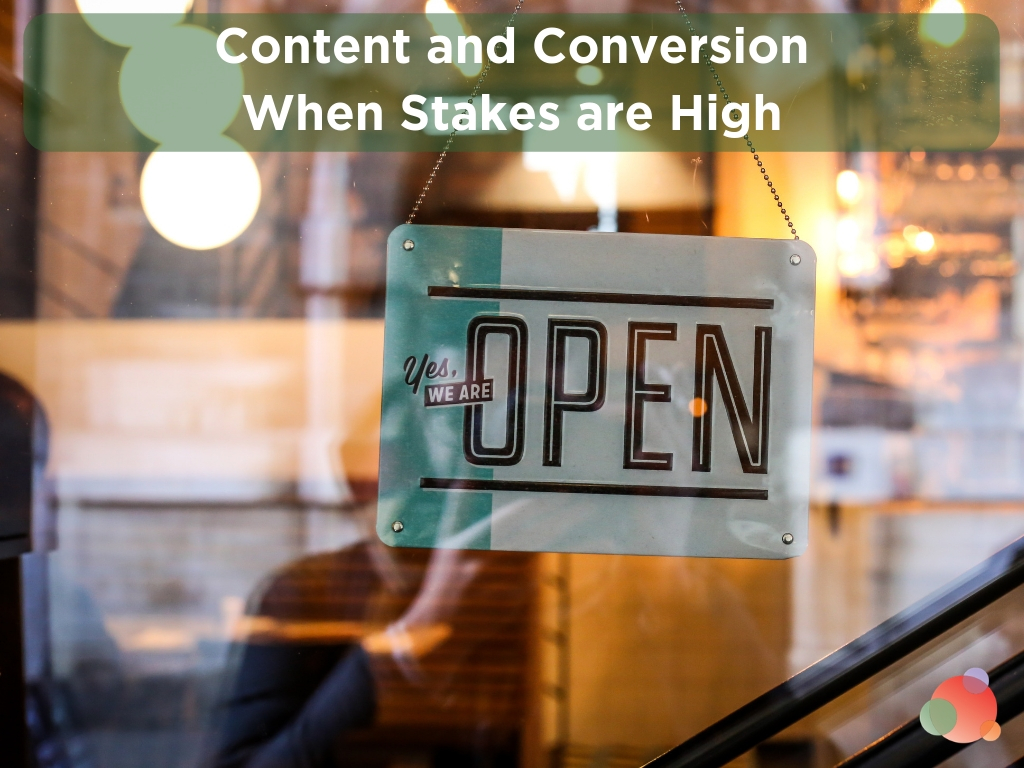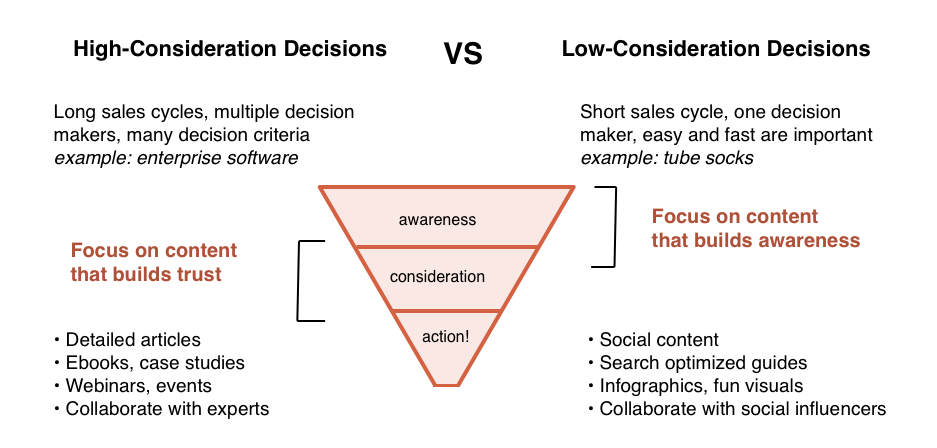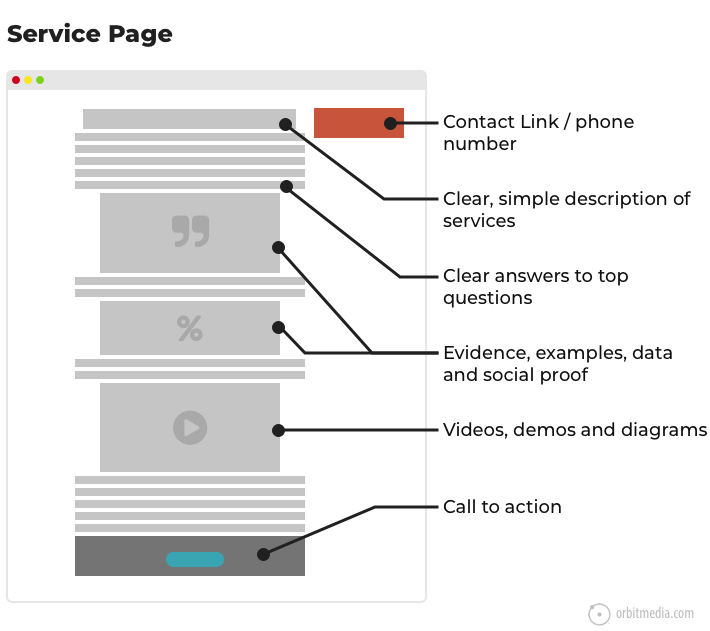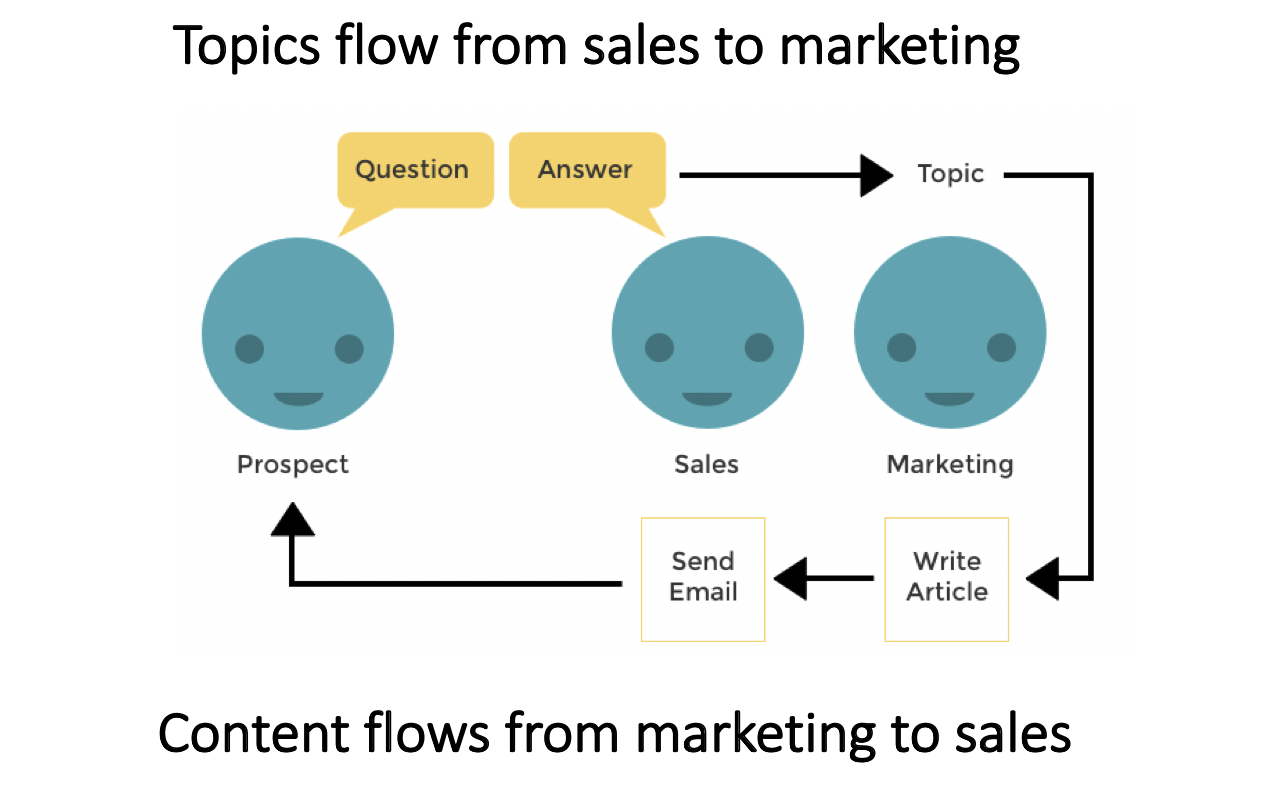 B2B vs. B2C. Big difference, right?
B2B vs. B2C. Big difference, right?
We often think of B2B decisions as big (million-dollar enterprise software) and B2C decisions as small (tube socks).
But that’s not always the case.
Consider these two decisions:
- B2B: Office supplies… as in, paper clips
- B2C: Senior housing… as in, my final home here on earth
So, we see that the big difference isn’t B2B or B2C, the big difference is in the type of decision.
Is it a high-consideration, high-stakes decision?
Or is it a low-consideration, low-stakes decision?
Content for Long Sales Cycles
When the stakes are high, people take time to decide, and there may be several people involved in the decision.
They may do a lot of research, have a lot of decision criteria, or may need expert advice.
It’s likely a consultative sale.
When stakes are low, people can decide more quickly.
There are few decision criteria. Click! Add to cart.
It’s likely a transactional sale.
So how does content fit in?

Source: Orbit Media
When the decision process is long, you can’t expect the visitor to become a lead on their first visit.
And you can’t expect them to remember you and come back soon for more information.
This is why “middle of funnel” content is so important.
If you can nudge your visitor over the psychological threshold and get them to take a small action—download the ebook, register for the webinar—you’ve captured the email address, and the nurturing can begin.
Now you’re in the game.
The Content Cycle Begins
It starts with a welcome email series, which is that series of automatic messages they get after the ebook download or the webinar registration.
These emails often have the highest open and click-through rates, because the subscriber is warm.
They just engaged. They’re expecting something:
- Immediately…the first email is a thank you and a follow-through on the promise of content.
- Later that week…a quick follow-up with a link to more content that would logically follow the first piece.
- A few weeks later…Hello! Here is the most valuable thing we have ever published.
Often, these welcome series emails can include five or more messages.
They’re automated, valuable to the recipient, and a powerful mechanism for the brand to keep in touch.
The final message may even be a direct sales pitch.
Alongside that welcome series is the newsletter.
This is where the hard work comes in.
Once per month at least, you are putting a message in their inbox.
The sender’s name is a person (it’s not just a brand), and the subject line specifies the topic (it’s not just something clever).
The body text is simply an invitation to click and read an article.
And that article is a lovingly crafted, easily scanned, detailed explanation of something helpful or insightful or entertaining.
Anything less and they’ll slowly slip away.
It’s hard work.
But it gives you one very valuable thing: a shot at being top-of-mind when the key moment comes.
Structure of a High Converting Page
They engaged with your content at least once. You’ve kept in touch with more content. And finally, when they’re ready for help, they think of you and come back.
They start on your homepage and then move into the sales pages.
High- or low-consideration, the elements of a high converting sales page are the same.
- Content that answers top questions and addresses objections
- Evidence supporting that content
- Clear and specific calls to action
These elements should be in the general order of importance to the typical visitor and guide the eye down the page through a series of messages.

Source: How to Design a Website, Orbit Media
The Copywriting Trick Most Sites Miss
Bad websites toot their horn and go on and on about how great their offer is.
Better websites answer visitor questions and give them the answers they’re looking for.
The best websites address the underlying motivations of visitors and address the hidden objections in the mind of the visitor.
Conversion copywriters know a secret.
They know the key to visitor psychology isn’t to just address the why. It’s to address the why not.
They know that even a small amount of uncertainty can kill the lead.
Will it be hard? Expensive? Time-consuming? Will it connect? Will it break? When will it be ready? Will this choice make me look foolish?
The best copywriters address objections.
Only after the main objections are defeated will the visitor become a lead.
How Do You Know Audience Triggers?
Where do you get this secret information on why they buy? Why they don’t? How does the marketer get into the mind of the prospect and find those hidden objections?
You have an ally who can help. High-consideration offerings almost always require a sales team.
For complex offerings, the salesperson acts as a guide, which means they’ve had hundreds of conversations with prospects. They know the hopes, the fears, the goals, the objections.
So the marketer needs to ride along on some meetings. Listen in on some calls. And dig into the sent mail folder of the sales associate.
Just grab the top salesperson’s laptop and search their outbox for question words: why, how, when, who.
It’s a goldmine.

Source: 17 Blog Ideas, Orbit Media
The insights will help write better copy for sales pages.
It will also inform better content for the blog, topics for the webinar, and subjects for the ebook.
Once the content is produced, it can be shared with the sales team who can share it with the next prospect.
Or better yet, share it with the current prospect.
Remember, they’re hanging out in your sales funnel for weeks.
You’ve got time to make something just for them.
After all, this isn’t tube socks.
Photo by Alexandre Godreau on Unsplash